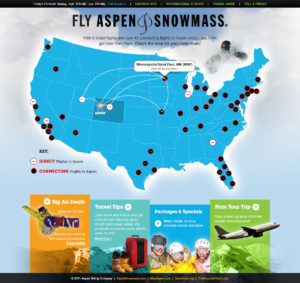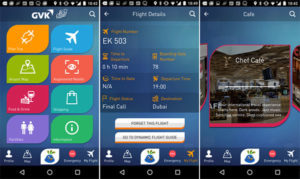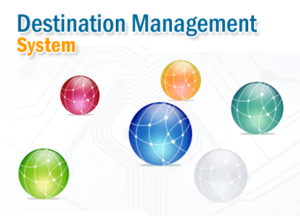
Disrupt the Lives of Airport Passengers By Taking Away Routine
Airport Concessions, Technology & Farm Fresh
Thirty years ago airports like San Francisco International Airport (SFO) changed the game by doing local surveys — market basket pricing surveys — then insisting that concessions offered competitive prices and better food options. Today airport concession programs are being driven by another phenomenon, technology. It’s all about the experience, convenience and choice, and technology is playing a vital role as an instrument of change; change moving at lightning speed.
Technology provides a platform to capture revenue opportunities for all of an airport’s business partners and the community they serve. It drives the future of the airport terminal experience that will deliver high marks in customer satisfaction. It’s not uncommon for airports to fall into the trap of making an assumption that concessions must pay a fee for the “privilege” of doing business at the airport. The fact is passengers stimulate the local economy and create jobs from the airport tarmac to main street. Making an investment in technology to encourage passengers to spend more money at the airport –through convenience and by creating innovative “cool” factors — builds a foundation for success.
After serving communities in the airport management profession I joined Corporate America before launching into private enterprise. Corporate America offers a platform to initiate mass changes in technology, like the rental car industry that I served when it rolled out remote mobile devices to speed up the check-in process. Local private enterprise benefits by networking resources, often by necessity, to maximize bottom line profits. It is the latter that I first want to speak to with regard to the airport’s role in driving technology changes to support its concession program and to enhance the passenger experience with that “cool” factor offering real time choices that optimize convenience.
Establishing an Airport Destination Management Organization
 Aspen, Colorado drives visitors to this international resort community through Stay Aspen Snowmass (SAS) owned by Aspen Ski Company, Aspen Lodging Properties and the Snowmass Village Resort Association. As a former investor in a lodging property, we were one of the “owners” of SAS, a collective including competitive properties. For the “privilege” of being an owner we paid a percentage fee for each transaction similar to an airport’s concession fee. Distinctively, SAS provided a marketing vehicle to drive business. In its infancy SAS was simply a call center, later incorporating a web portal. As you would expect, with the advent of mobile technology and social media, SAS’s role has expanded to leverage up its digital marketing campaign strategies.
Aspen, Colorado drives visitors to this international resort community through Stay Aspen Snowmass (SAS) owned by Aspen Ski Company, Aspen Lodging Properties and the Snowmass Village Resort Association. As a former investor in a lodging property, we were one of the “owners” of SAS, a collective including competitive properties. For the “privilege” of being an owner we paid a percentage fee for each transaction similar to an airport’s concession fee. Distinctively, SAS provided a marketing vehicle to drive business. In its infancy SAS was simply a call center, later incorporating a web portal. As you would expect, with the advent of mobile technology and social media, SAS’s role has expanded to leverage up its digital marketing campaign strategies.
SAS is a Destination Management Organization (DMO). A DMO is similar to a Visitors and Convention Bureau (VCB) and/or can work in synergy with a VCB. Airports would greatly benefit by creating a DMO or a Destination Management System (DMS). A DMS would simply be managed by the airport administration rather than a separate entity. A DMO or DMS would benefit concessionaires and tenants, from the curb to the tarmac, in exchange for the concession fees and rents that they pay while creating incremental revenues to the airport’s bottom line. An Airport DMO or DMS (ADMO or ADMS) is a game changer. ADMS/ADMOs can revolutionize the way airports facilitate passenger and revenue growth for its collective tenant base using innovative technology solutions.
The Travel Experience of the Future
 Digital marketing has moved beyond websites, social media portals and digital display advertising. New technology includes, but is not limited to, Augmented Reality (AR) wayfinding to assist travelers to find their way from the curb to the gate and in reverse for arriving passengers. Messaging can stay with travelers as they move from one terminal to the next, offering real time 3D images and specials on their mobile devices such as a “glass of wine and cheese platter” appearing to float outside an upscale wine bar. Airports can take the anxiety out of travel by eliminating the need to chase down the nearest Flight Information Display (FID) giving access directly from their mobile device to real time flight information. The list goes on.
Digital marketing has moved beyond websites, social media portals and digital display advertising. New technology includes, but is not limited to, Augmented Reality (AR) wayfinding to assist travelers to find their way from the curb to the gate and in reverse for arriving passengers. Messaging can stay with travelers as they move from one terminal to the next, offering real time 3D images and specials on their mobile devices such as a “glass of wine and cheese platter” appearing to float outside an upscale wine bar. Airports can take the anxiety out of travel by eliminating the need to chase down the nearest Flight Information Display (FID) giving access directly from their mobile device to real time flight information. The list goes on.
The optimum time to incorporate these type of technology innovations is before an airport finalizes its request for proposals (RFP) for new concessions. An ADMO is one method to facilitate the centralization of technology change to capture click-through revenue opportunities and to capitalize on the holistic information sources from your collective tenant/concession base as I’ll explain below.
Contract Terms, Technology and Your ADMS/ADMO
Your innovative technology solutions are as strong as your weakest, forgotten, link. An ADMO provides a vehicle for member buy-in and a path to bridge the conversation between the technical and non-technical sides of diverse businesses from the curb to the gate. Similarly, you can manage your ADMS by a committee of staff, tenants and stakeholders. Membership should be open and representative of all airport businesses. It optimizes opportunities to create a digital passenger dashboard of information about your airport and the community and businesses it supports.
 To begin with it is important to brainstorm with your business, technology and operations team in collaboration with your tenant or prospective tenant base about your “dream” technology program. Essentially, this group is acting as an interim ADMO or committee for your ADMS. As an interim body, this group should lay out a short, mid and long-term concession/tenant technology program, flush out the cost, setup a cost recovery model, devise implementation strategies, contemplate strategies to embrace changes in technology and future opportunities, develop initial marketing strategies for individuals and the collective plus determine what other critical factors should be considered. I would submit that external community partners such as a CVB may ultimately have a role in your technology program to drive revenues from passengers who still need to rent a car, a room or make dinner reservations. CVBs often charge a fraction of the cost to local businesses compared to Expedia, Travelocity, OpenTable and other booking engines. CVB members can benefit through real time wayfinding connectivity with passengers to assist directly with such bookings to keep more revenues in the local economy.
To begin with it is important to brainstorm with your business, technology and operations team in collaboration with your tenant or prospective tenant base about your “dream” technology program. Essentially, this group is acting as an interim ADMO or committee for your ADMS. As an interim body, this group should lay out a short, mid and long-term concession/tenant technology program, flush out the cost, setup a cost recovery model, devise implementation strategies, contemplate strategies to embrace changes in technology and future opportunities, develop initial marketing strategies for individuals and the collective plus determine what other critical factors should be considered. I would submit that external community partners such as a CVB may ultimately have a role in your technology program to drive revenues from passengers who still need to rent a car, a room or make dinner reservations. CVBs often charge a fraction of the cost to local businesses compared to Expedia, Travelocity, OpenTable and other booking engines. CVB members can benefit through real time wayfinding connectivity with passengers to assist directly with such bookings to keep more revenues in the local economy.
The technology program identified by the interim ADMO must be captured in the terms of the RFP and ultimately all respective lease and concession agreements. If contracts include the short-term technology plan, provisions for advancing to mid-term and the optimum plan should be preserved. Check back for my blog on the legal considerations with regarding to implementing a technology supported concession program.
The Dichotomy of Farm Fresh & Technology
Facebook’s Mark Zuckerberg is a technology genius but it is said that his greatest success was to avoid working, as an engineer, in isolation of the reality of human influences. Practicable sustainable uses of technology require a reality check with regard to how people will use the technology created. Incorporating an ADMO as part of your concession program does not mean you are abandoning ship to the roots of business from down on the farm. In fact, the ADMO fixes that — it is a great companion of choice for passengers who prefer to eat gluten free or non-GMO food or who want to know the nutritional facts about what they are eating. Technology can deliver that type of information at the press of button on their mobile devices.
Developing an understanding of an airport’s passenger base and targeted passenger base is critical. As an airport expands its air service program the cultural preferences, values and expectations will shift. This is particularly true when an airport serves markets beyond the United States. A comprehensive due diligence is key. Conducting a SWOT analysis of internal and external factors, conducting inspections, building a MATRIX to understand food and service preferences, reviewing spending patterns at your airport in comparison to other airports, understanding the average cost to build out a concession by hub size and looking for opportunities to tweak terminal space utilization are all key elements. Understanding the best management approach to contractually move your airport into the future is key based on the resources of your organization whether it is direct leasing, prime concessionaire, third-party developer or lease management options.
Passengers are looking for the unique local experiences including farm to terminal options offering fresh and organic culinary choices, unique gifts from local craftsman and services that provide support and convenience while they wait for their next flight. Opportunities for local businesses – including Disadvantaged, Minority, Women and Veteran Business Enterprises (XBE) are endless and should be creatively built into your plan to put a signature of your community that exceeds the expectations of a diverse passenger base.
Put a Spotlight on Your Concessions Exceeding Passenger Expectations with Technology
 Once the signature of your local experience has been defined, your marketing plan — driven by technology — will help you execute customer service with precision. There are a few must-haves:
Once the signature of your local experience has been defined, your marketing plan — driven by technology — will help you execute customer service with precision. There are a few must-haves:
- Wayfinding technology.
- Mobile device delivery of:
- FID information
- Menus for all vendors including descriptions, prices, nutritional information, and possibly information about local sourcing from farm to terminal
- Non-food concessions should include real time inventory of product lists and pricing
- Wait times for food service should be posted in real time
- Language translation capabilities.
- The ability to accept payments via broad mobile device platforms.
- Adequate plug-ins for mobile devices and computers in all seating and wait areas.
Some other opportunities include:
- Order placing by mobile device for pick-up or delivery to your gate, table, destination or home:
- Terminal design considerations may include airport lounges that facilitate in-terminal deliveries of food, beverages or products. Some passengers prefer to be near their gates to reduce travel anxiety while others are looking for that special oasis. Balancing space based on these preferences is critical
- Home delivery options are evolving including Amazon’s “Internet of Things” (IoT) platform.
- Augmented Reality with 3D real time offerings using technology to track passenger movement from the curb to the gate.
The bottom line, what is known today maybe obsolete tomorrow with regard to technology opportunities that elevate the customer experience. Forming an ADMO or the like in collaboration with your tenants and the community at large via entities such as the CVB will posture your airport to be technology responsive to customer demand to meet or exceed their expectations.

